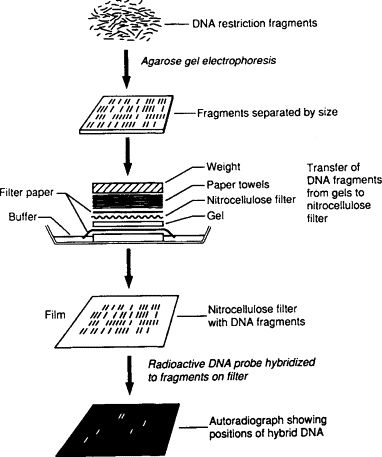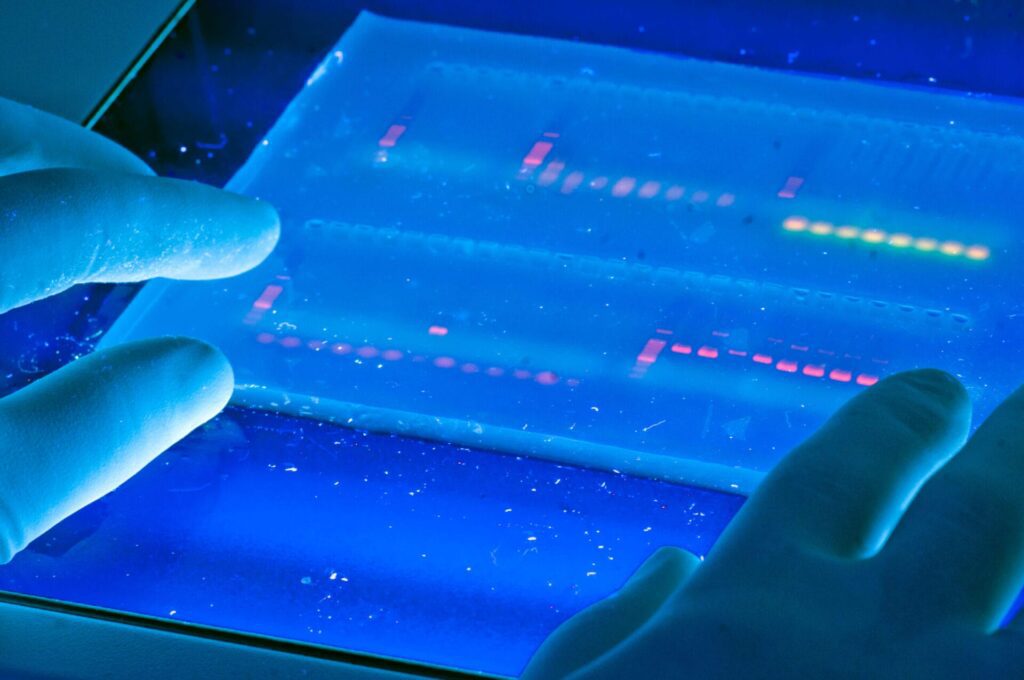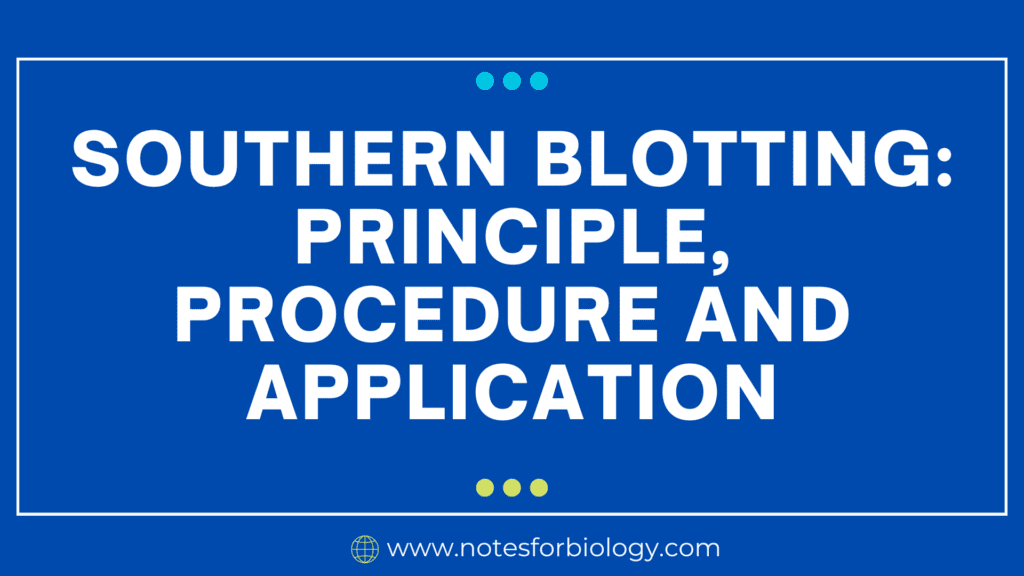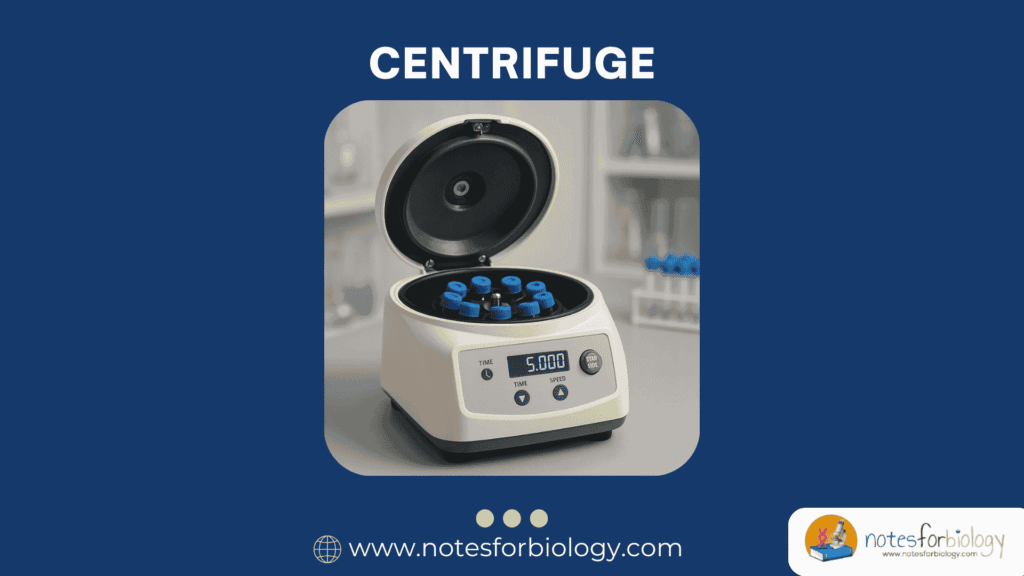What is mean by Southern Blotting?

Southern blotting is a widely-used laboratory technique for detecting specific DNA sequences within a sample. First introduced by biologist Edwin Southern in 1975, it has become a key method in molecular biology to study genes, detect mutations, and perform DNA fingerprinting. The technique enables researchers to pinpoint a particular DNA sequence from a complex mixture, making it essential for various genetic analyses.
Table of Contents
Principle of Southern Blotting
Southern Blott is based on the principle of identifying specific DNA sequences among a collection of DNA fragments. This is achieved by transferring DNA fragments onto a membrane and using a labeled probe that binds to the target sequence, allowing for its detection.
The process works as follows:
Fragmentation of DNA
DNA is first cut into smaller pieces using restriction enzymes that recognize and cleave specific sequences.
Gel Electrophoresis
The DNA fragments are then separated by size using gel electrophoresis, where smaller fragments move faster through the gel than larger ones.
Transfer to Membrane
The separated fragments are transferred from the gel onto a nylon or nitrocellulose membrane.
Probe Hybridization
A labeled probe, which is complementary to the target DNA sequence, is added to the membrane. The probe binds specifically to the target sequence.
Detection
The labeled probe, bound to the target DNA, is detected through signals from radioactive, fluorescent, or enzyme tags, revealing the presence of the specific DNA sequence.
Simply put, it is like fishing for a specific DNA sequence in a mixture, helping scientists find and study a particular gene or mutation.
Procedure of Southern Bloot
The Southern Blott technique consists of several steps:
DNA Extraction

DNA is extracted from biological samples such as blood or tissue.
DNA Digestion
Restriction enzymes cut the DNA into smaller fragments at specific sites, producing a variety of fragment sizes.
Gel Electrophoresis

The DNA fragments are loaded into an agarose gel and separated by applying an electric current, with smaller fragments moving faster through the gel.
Denaturation
The double-stranded DNA in the gel is treated with an alkaline solution to separate it into single strands, allowing the probe to bind to the target sequence.
Transfer to Membrane
The separated DNA fragments are transferred from the gel onto a solid membrane by capillary action, where the DNA sticks to the membrane while retaining the pattern from the gel.
Probe Hybridization
A labeled probe, complementary to the DNA sequence of interest, is added to the membrane. The probe binds to the target DNA fragment.
Washing and Detection
Excess probe is washed away, leaving only the probe bound to the target sequence. The probe’s label is detected, revealing the presence of the target DNA sequence.
Analysis
The resulting image shows bands that represent the DNA fragments hybridized to the probe, allowing scientists to identify the presence and size of the target sequence.
Applications of Southern Blotting
Southern blotting is applied in various fields, from genetics to forensics. Some key applications include:
Gene Mapping and Cloning: This technique helps researchers map genes to specific chromosome locations and clone genes for further study.
Mutation Detection: Southern blotting is used to identify genetic mutations or alterations, making it useful in studying diseases and performing genetic testing. For example, it can detect mutations linked to cystic fibrosis.
Forensic Science and DNA Fingerprinting: In forensics, Southern blotting is crucial for analyzing DNA evidence. It helps create DNA fingerprints to match crime scene samples with suspects.
Diagnosis of Genetic Disorders: Southern blotting is used in medical diagnostics to detect gene deletions, rearrangements, or duplications that are associated with inherited diseases like Huntington’s or sickle cell anemia.
Paternity Testing: The technique is used in paternity testing by comparing DNA markers between parents and children to determine biological relationships.
Viral and Bacterial Detection: Southern blotting can detect the presence of viral or bacterial DNA, aiding in diagnosing infections and studying pathogen genetics.
In conclusion, Southern blotting is a critical method for identifying specific DNA sequences in complex samples. Its ability to detect and analyze genetic material has made it indispensable in research, diagnostics, and forensic investigations.
Frequently Asked Questions (FAQ)
What is the principle behind Southern blotting?
The principle of Southern blotting is to identify specific DNA sequences within a mixture. DNA fragments are separated using gel electrophoresis, transferred to a membrane, and hybridized with a labeled probe that binds to the target sequence. The probe’s label is detected, revealing the presence of the target DNA.
Who developed Southern blotting?
It was developed by British biologist Edwin Southern in 1975. The technique is named after him.
Related Articles




